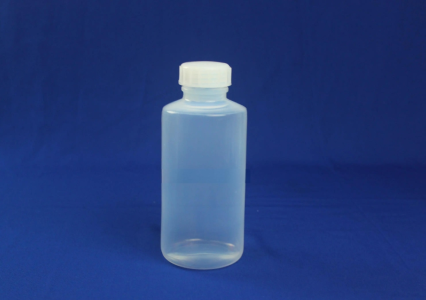DSPE-PEG-Biotin对循环中小细胞外囊泡的直接标记
链接:https://xueshu.baidu.com/usercenter/paper/show?paperid=111h0820k42y0re09m0a06a0rh159218&site=xueshu_se
作者:Yu, Zi-Li | Zhao, Yi | Miao, Fan | Wu, Min | Xia, Hou-Fu | Chen, Zhuo-Kun | Liu, Hai-Ming | Zhao, Yi-Fang | Chen, Gang
Circulating small extracellular vesicles (sEVs) are naturally occurring nanosized membrane vesicles that convey bioactive molecules between cells. Conventionally, to evaluate their behaviors in vivo, circulating sEVs have to be isolated from the bloodstream, then labeled with imaging materials in vitro, and finally injected back into the circulation of animals for subsequent detection. The tedious isolation-labeling-reinfusion procedures might have an undesirable influence on the natural properties of circulating sEVs, thereby changing their behaviors and the detected kinetics in vivo. Herein, we proposed an in situ biotinylation strategy to directly label circulating sEVs with intravenously injected DSPE-PEG-Biotin, aiming to evaluate the in vivo kinetics of circulating sEVs more biofriendly and accurately. Such an analysis strategy is free of isolation-labeling- reinfusion procedures and has no unfavorable influence on the natural behaviors of sEVs. The results showed that the lifetime of generic circulating sEVs in mice was around 3 days. Furthermore, w; for the first time, revealed the distinct in vivo kinetics of circulating sEV subpopulations with different cell sources, among which erythrocyte-derived sEVs showed the longest lifespan. Moreover, compared with circulating sEVs in situ or used as autograft, circulating sEVs used as allograft had the shortest lifetime. In addition, the in situ biotinylation strategy also provides a way for the enrichment of biotinylated circulating sEVs. In summary, this study provides a novel strategy for in situ labeling of circulating sEVs, which would facilitate the accurate characterization of their kinetics in vivo, thereby accelerating their future application as biomarkers and theranositic vectors.
译文:
循环小细胞外囊泡(sEVs)是天然存在的纳米级膜囊泡,在细胞之间传递生物活性分子。传统上,为了评估它们在体内的行为,循环的sEV必须从血液中分离出来,然后在体外用成像材料标记,最后注射回动物的循环中进行后续检测。繁琐的分离标记再融合程序可能会对循环sEV的自然性质产生不利影响,从而改变它们的行为和体内检测到的动力学。在此,我们提出了一种原位生物素化策略,用静脉注射的DSPE-PEG生物素直接标记循环sEV,旨在更生物友好和准确地评估循环sEV的体内动力学。这种分析策略没有隔离标记-再融合程序,对sEV的自然行为没有不利影响。结果显示,小鼠中通用循环sEV的寿命约为3天。此外,w;首次揭示了不同细胞来源的循环sEV亚群的不同体内动力学,其中红细胞来源的sEV寿命最长。此外,与原位循环sEVs或用作自体移植相比,用作同种异体移植的循环sEVs的寿命最短。此外,原位生物素化策略还为生物素化循环sEVs的富集提供了一种方法。总之,本研究为循环sEV的原位标记提供了一种新策略,这将有助于准确表征其体内动力学,从而加速其作为生物标志物和*载体的未来应用。
DOI:10.1021/acs.analchem.1c01176

西安齐岳生物提供相关产品:
m-PEG-DSPE
m-PEG8-DSPE
m-PEG8-DSPE
m-PEG12-DSPE
m-PEG24-DSPE
mPEG-CLS
mPEG-DEPE
mPEG-DLPE
mPEG-DMPE
mPEG-DOPE
mPEG-DPPE
mPEG-DSPE
mPEG-DSPE CAS No.: 147867-65-0
mPEG-DSPE(ammonium salt)
以上文章内容来源各类期刊或文献,如有侵权请联系我们删除!




 齐岳微信公众号
齐岳微信公众号 官方微信
官方微信 库存查询
库存查询